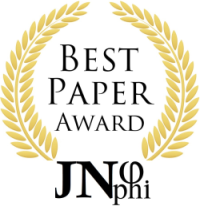Investigation of the Relationship between Anxiety Disorder and Time Perception with DRD2 rs1800497 Polymorphism
Abstract
We have many biological systems that regulate the perception of time, which is one of our most essential abilities that allows subjectively predicting, perceiving and understanding the duration of experiences, feelings and achievements. There are findings obtained from many studies aiming to illuminate the place and importance of time, which was the most critical reference point for human understanding of life in the past, for us mammals. According to these findings, it is observed that there is a similar mechanism that provides the perception of time in almost every living organism. Time perception is vital for the healthy functioning of cognitive activities, physiological needs and behavioral relations, and the bio-psycho-social order's systematicity. Among the studies conducted, the findings obtained in the studies related to the effect of psychiatric disorders on the perception of time are somewhat blurry compared to the others. The research for this study was based on six basic Polymorphisms known to affect time perception and internal clock mechanisms. These are as follows: SLC6A4 / 5-HTTLPR, 5HT2A / T102C, DRD2 / TAQ1A, SLC6A3 / 3UTR VNTR, COMT / VAL158MET, GABRB2 A/C, CLOCK. In our study, the relationship between the rs1800497 polymorphism, which is one of these seven polymorphisms that are effective in the functioning of the internal clock in the human brain, and the inventory used in the measurement of anxiety, was examined in 14 participants. Beck Anxiety Inventory (BAI) was used to measure anxiety, and PCR was used to detect genetic variants. When the findings were evaluated, no significant relationship was found between anxiety and DRD2 rs1800497 polymorphism.
Keywords:
Time Perception, Beck Anxiety Inventory (BAI), Internal Clock, Anxiety, PolymorphismDownloads
Metrics
References
Amalric M, Koob G. Depletion of dopamine in the caudate nucleus but not in nucleus accumbens impairs reaction-time performance in rats. The Journal of Neuroscience 1987; 7(7): 2129-2134.
Baddeley A. Time-Estimation at Reduced Body-Temperature. The American Journal Of Psychology 1966; 79(3): 475.
Bartholomew A, Meck W, Cirulli E. Analysis of Genetic and Non-Genetic Factors Influencing Timing and Time Perception 2015; 10(12): e0143873.
Bender S, Rellum T, Freitag C, Resch F, Rietschel M, Treutlein J. Time-Resolved Influences of Functional DAT1 and COMT Variants on Visual Perception and Post-Processing 2012; 7(7): e41552.
Berrios GE. The history of mental symptoms university of cambridge. Cambridge University Press 1996.
Downloads
Published
How to Cite
Issue
Section
Categories
License
Copyright (c) 2022 Hüseyin Oğuzhan ŞAN, Sultan Tarlacı, Korkut Ulucan, Tolga Polat, Ozlem Ozge Yilmaz, Beste Tacal Aslan

This work is licensed under a Creative Commons Attribution-NonCommercial-ShareAlike 4.0 International License.
Authors continue to hold copyright with no restrictions.














